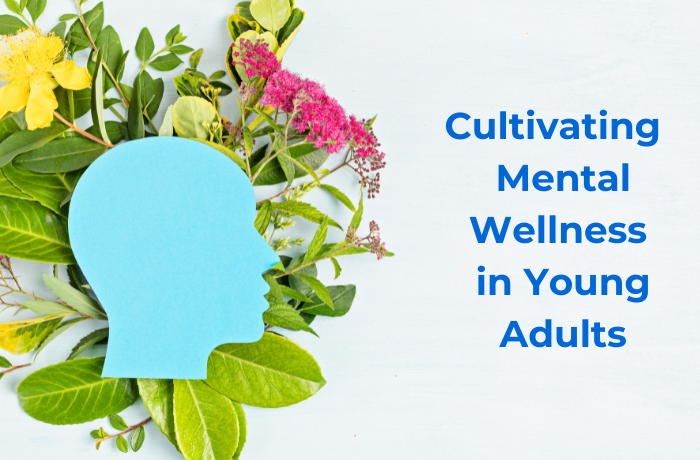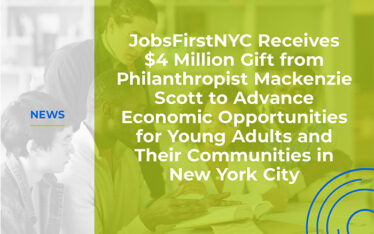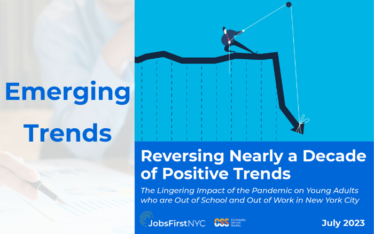Mental Wellness month’s placement at the start of the calendar year is a reminder to prioritize our well-being before taking on all the challenges of daily life. As we rush to meet 2023, let’s remember to keep not only our own mental wellness but the wellness of the communities surrounding us, top of mind. Communities where millions of people, especially young adults, struggle to maintain positive mental health.
What is Mental Wellness?
The Global Wellness Institute defines mental wellness as “an internal resource that helps us think, feel, connect, and function; it is an active process that helps us build resilience, grow, and flourish.”
The Challenge
The National Alliance of Mental Illness (NAMI), the largest grassroots mental health organization dedicated to building better lives for Americans affected by mental illness, released a report in 2020 with staggering statistics on the state of young adult (18–24) mental health:
- 1 in 3 experienced a mental illness
- 1 in 6 experienced a serious mental illness
- 3.8 million had suicidal thoughts
The NAMI New York State Fact Sheet documents that “In February 2021, 35.8% of adults in New York reported symptoms of anxiety or depression, 20.2% were unable to get needed counseling or therapy,” and that “High school students with depression are more than 2x more likely to drop out than their peers.”
These staggering statistics reflect the alarming August 2022 audit from New York Comptroller DiNapoli who documented that “While the Department of Education has shown a willingness to confront these issues, many of New York’s school children still face a mental health emergency, and schools are not equipped to provide them with the support they need.”
Why Mental Wellness Matters
Mental wellness is an essential foundation to a purposeful life where young people can thrive. Young people, in their late teens, are expected to make big decisions about the trajectory of their lives – all while trying to work through their own struggles in navigating identity and belonging.
The American Mental Wellness Association points out that “The dreaded teen years are some of the roughest years of life, although many adults tend to forget how tough their teen years really were.
“With emotions off the charts due to raging hormones, the stress of academic perfection, the battle of fitting in versus being one’s own self, and an ever-looming imposter syndrome, teens have it pretty rough.”
Teens are confronted with having to make life altering decisions about which college to attend, the career they would like to have, the looming responsibility of paying rent, the list goes on. Ideally these decisions should be made when your mind is in a healthy, happy state. But with many competing priorities combined with the hormone-driven emotional rollercoaster of being a teen, a clear state of mind is not the reality of many young people.
How you feel about yourself and your capabilities will undoubtedly affect how you process and react to the information that we have and the choices we make.
So, how do we help young adults clear the fog and meet their futures with a healthy state of mind?
What We Can Do
We can start by getting ahead of the problem. We know that fostering good mental health early on lessens the chance of a young person facing challenges with adverse, debilitating mental health symptoms.
We recommend that New York City officials:
#1 – Incorporate mental health awareness into the K-12 health and physical education curricula.
Incorporate mental health awareness into the K-12 health and physical education curricula so that students can understand the language and explore the appropriate mental health resources. New York City officials should follow up on its promise to provide expanded community-based mental health services as schools are already suffering from critical staff shortages.
#2 – Ensure that the New York City Department of Education is tapping into the Youth Mental Health Services Act of 2021.
This bill authorizes state and local educational agencies to use Student Support and Academic Enrichment grants to improve mental health services available to students. Specifically, it allows funds to be used for identifying and disseminating best practices for mental health first aid, emergency planning, coordination of services, and telehealth services.
#3 – Provide greater oversight of the Department of Education’s mental health program.
This recommendation is based on Comptroller DiNapoli’s revelatory audit findings that identified concerns issues with the DOE’s delivery and oversight of mental health programs. The audit says “The DOE’s website, for example, highlighted six mental health programs and touted that one of these mental health programs is offered at your child’s school.” That claim was false, auditors found, as nearly 40% (563) of DOE’s 1,524 schools did not have even one of these structured mental health programs.”
#4 – Emphasize collaboration with local community-based organizations.
According to youth.gov, “Schools that also choose to collaborate with community partners have found that they can enhance the academic success of individual students. These partnerships have found to significantly improve school wide truancy and discipline rates, increase the rates of high school graduation, and help create a positive school environment in which a student can learn and be successful in school and in the community.”
The Bottom Line
The current systems that are in place to improve the livelihood of young adults do not place a strong enough priority on mental wellness and mental health, and as such erode the best efforts of educators and employers. However, as a collective, we have the power to create change.
We are encouraged that in November 2022, Governor Kathy Hochul announced more than $3.3 million to community-based healthcare providers that will increase access to mental health services for children and families across the state. We support the move and call for even greater investment in young adults.
If you or a loved one face a mental health emergency, please dial 988.
988 has been designated as the new three-digit dialing code that will route callers to the National Suicide Prevention Lifeline (now known as the 988 Suicide & Crisis Lifeline), and is now active across the United States.
When people call, text, or chat 988, they will be connected to trained counselors that are part of the existing Lifeline network. These trained counselors will listen, provide support, and connect people to additional resources as needed.
For more tools and resources:
- National Suicide Prevention Helpline
- American Mental Wellness Association
- Association of Mental Health and Wellness
- Audre Lorde Project
- Brooklyn Community Pride Center
- National Alliance for Mental Illness New York State
- National Domestic Violence Crisis Line
- National Eating Disorders Association
- Now Matters Now
- NYC Well
- NYC Unity Project
- NYS Office of Mental Health
- Rainbow Heights Club
- Safe Horizon Domestic Violence Hotline
- Substance Abuse and Mental Health Services Administration (SAMHSA) Helpline
- The Lesbian, Gay, Bisexual, & Transgender Community Center
- The Trevor Project
- TransAtlas
- Weill Cornell Medicine Center for Human Rights – Mental Health Resource Directory
- Your Life Your Voice (focused on supporting youth) 1-800-448-3000 or Text VOICE to 20121
Authored by Christine James-McKenzie and Megan Marshall





